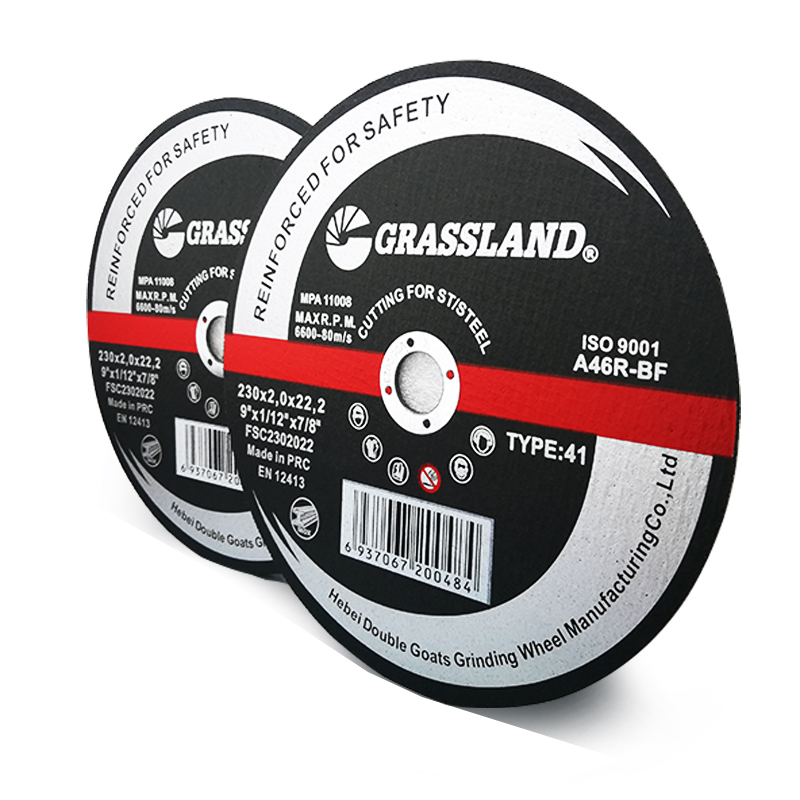Understanding Cutting Discs for Stainless Steel A Comprehensive Guide
Stainless steel is known for its strength, resistance to corrosion, and aesthetic appeal, making it a popular choice in various industries, including construction, automotive, and kitchenware. However, cutting stainless steel can be a challenging task due to its hardness and toughness. The right cutting disc is essential for achieving clean cuts and ensuring the longevity of both the tool and the material being worked on. In this article, we will explore the types of cutting discs suitable for stainless steel, their features, and important considerations when selecting the right disc for your needs.
Types of Cutting Discs
There are several types of cutting discs available for stainless steel, each designed for specific applications and materials
1. Bonded Cutting Discs These discs are made from aluminum oxide or zirconia grains bonded together with resin. They are versatile and commonly used for cutting various metals, including stainless steel. The aluminum oxide discs are ideal for general cutting tasks, while zirconia discs perform better on tougher materials due to their higher durability.
2. Diamond Cutting Discs These discs feature a diamond-coated edge and are excellent for precision cutting. They are ideal for cutting stainless steel with minimal heat generation, reducing the risk of distortion or discoloration of the metal. Diamond discs are particularly beneficial for thin sheets of stainless steel or intricate designs.
3. Fiber Discs While primarily used for grinding, fiber discs can also be effective in cutting stainless steel when combined with the right backing pad. They provide a smoother finish and are often used in applications where surface quality is important.
4. Thin Cutting Discs Thin cutting discs (usually around 1mm to 2mm thick) are optimized for quick and clean cuts. They produce less burr and require less force, making them suitable for various thicknesses of stainless steel.
Key Features to Consider
When selecting a cutting disc for stainless steel, consider the following features
1. Disc Thickness Thinner discs are generally preferred for cutting stainless steel as they create less heat and require less power to cut through the metal. However, ensure that the disc's thickness is appropriate for the specific application.
2. Material Composition The material of the cutting disc plays a crucial role in its performance. For stainless steel, discs made from high-quality aluminum oxide or zirconia are recommended for durability and effectiveness.
cutting disc for stainless steel

3. Grain Size The grain size of the cutting disc affects its cutting speed and finish. Finer grains are suitable for smooth cuts, while coarser grains can speed up the cutting process. Balance between the desired finish and the cutting speed is key.
4. Arbor Size Ensure that the arbor size of the cutting disc matches your angle grinder or cutting tool. An improper fit can lead to damage or accidents.
5. RPM Rating Always check the maximum revolutions per minute (RPM) rating of the disc to ensure it is compatible with your tool. Using a disc at a higher RPM than rated can lead to breakage and safety hazards.
Best Practices for Using Cutting Discs
To maximize the performance of your cutting discs and achieve optimal results, adhere to the following best practices
1. Proper Tool Setup Ensure your cutting tool is correctly set up and is secure before use. This includes checking that the cutting disc is mounted correctly and that all guards are in place.
2. Adequate Cooling When cutting stainless steel, heat can build up quickly. Use cooling techniques, such as cutting with water or using a lubricant, to reduce heat buildup and prevent warping.
3. Steady Pressure Apply steady and even pressure when cutting. Avoid forcing the disc through the material, as this can lead to disc wear or breakage.
4. Protective Gear Always wear appropriate personal protective equipment (PPE) including goggles, gloves, and respiratory protection to shield yourself from metal particles and debris during cutting.
Conclusion
Choosing the right cutting disc for stainless steel is essential for ensuring efficiency, precision, and safety in your metalworking tasks. By understanding the various types of cutting discs, key features to consider, and best practices for use, you can make informed decisions that enhance your cutting experience. Whether you are a professional in the industry or a DIY enthusiast, investing in high-quality cutting discs tailored for stainless steel will significantly improve the quality of your work.
Post time:Dec - 12 - 2024

















